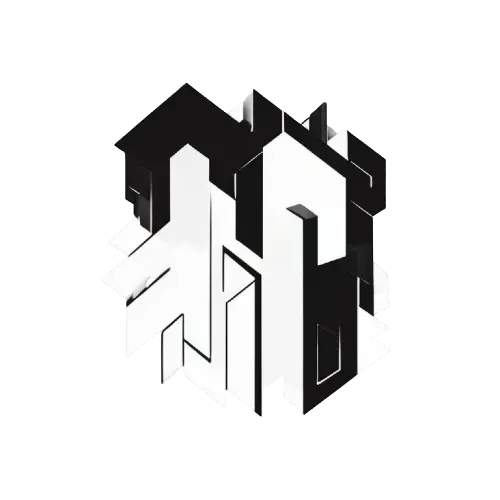CVE-2025-22868: Traefik's Dependency Dilemma - When JWS Syntax Goes Rogue
Alright folks, grab your favorite beverage, settle in, and let's talk about a sneaky vulnerability that recently surfaced in the popular cloud-native edge router, Traefik. Dubbed CVE-2025-22868, this isn't a flaw in Traefik's core logic itself, but rather a case of inherited risk from a third-party library – a reminder that in the world of modern software, you're only as strong as your weakest dependency. This particular issue involves how Traefik handles JSON Web Signatures (JWS) via a vulnerable Go library, potentially allowing malformed tokens to cause unexpected behavior.
TL;DR / Executive Summary
- What: CVE-2025-22868 is a vulnerability affecting Traefik Proxy versions prior to
v2.11.24,v3.3.6, andv3.4.0-rc2. - Root Cause: Traefik used a vulnerable version (
< v0.27.0) of thegolang.org/x/oauth2/jwslibrary, which improperly validated the syntactic correctness of JWS tokens. - Impact: Potential for unexpected behavior when processing maliciously crafted JWS tokens, possibly leading to authentication bypass, information disclosure, or denial of service depending on the specific Traefik configuration and usage of OAuth/JWS features. Severity is likely Medium to High (CVSS score pending).
- Mitigation: Update Traefik to
v2.11.24,v3.3.6,v3.4.0-rc2or later. These versions include the patchedgolang.org/x/oauth2dependency (v0.28.0or higher).
Introduction: The Gatekeeper and the Faulty ID Checker
Imagine Traefik as the super-efficient, highly organized bouncer at the entrance of your exclusive microservices club. It checks IDs, directs traffic, and ensures only authorized guests get in. OAuth2 and JWS are like the sophisticated digital ID cards used for verification – containing claims (information) signed cryptographically to prove authenticity.
Now, what happens if the tool the bouncer uses to scan the ID card format has a glitch? Maybe it checks the signature's validity but doesn't notice the expiration date field is garbled, or the name field contains weird characters it wasn't expecting. That's essentially what CVE-2025-22868 represents. Traefik, relying on the golang.org/x/oauth2/jws library, was susceptible because this library didn't strictly enforce the syntactic rules of JWS tokens before processing them.
Why does this matter to you, the DevOps engineer, security professional, or platform architect? Because Traefik sits at a critical network boundary. Any vulnerability, even one inherited from a dependency, could potentially compromise the security posture of the applications and services it protects. An attacker slipping past the gatekeeper because of a faulty ID check is a scenario we all want to avoid.
Technical Deep Dive: Unpacking the JWS Syntax Snafu
Let's get into the weeds a bit.
What is JWS?
JSON Web Signature (JWS) is a standard (RFC 7515) for securely transmitting claims between parties. A JWS token typically looks like HEADER.PAYLOAD.SIGNATURE, where each part is Base64URL encoded.
- Header: Contains metadata about the token and the cryptographic algorithms used (e.g.,
{"alg":"HS256","typ":"JWS"}). - Payload: Contains the claims (the actual data being asserted), like user ID, roles, expiration time (e.g.,
{"sub":"1234567890","name":"John Doe","admin":true}). - Signature: A cryptographic signature calculated over the header and payload, ensuring data integrity and authenticity.
The Vulnerability: Improper Validation of Syntactic Correctness
The core issue lies in the golang.org/x/oauth2/jws library (versions before v0.27.0). It seems the library might have been too lenient in parsing incoming JWS tokens. "Syntactic correctness" refers to the structural rules of the JWS format itself. Examples of syntactic violations could include:
- Malformed JSON in the header or payload.
- Incorrect Base64URL encoding.
- Unexpected data types for standard fields.
- Duplicate fields where they shouldn't exist.
- Violations of specific constraints defined in the JWS specification.
Analogy Time: Think of it like validating an email address. Checking for an "@" symbol and a "." is basic validation. Stricter syntactic validation would check for invalid characters, ensure the domain part looks like a domain, etc. The vulnerable library might have done the equivalent of only checking for the "@" sign, letting syntactically weird (but potentially malicious) "email addresses" slip through parsing.
Root Cause Analysis
The root cause is insufficient input validation within the jws.Decode function (or similar parsing logic) in the older golang.org/x/oauth2/jws library. When presented with a JWS token that violated structural rules, the parser might have:
- Returned unexpected data structures to the calling application (Traefik).
- Failed to properly check the signature due to parsing errors occurring before the signature validation step.
- Entered an unexpected state, potentially leading to resource exhaustion (DoS) or logic errors downstream.
- Handled errors in a way that inadvertently leaked information.
Attack Vectors
An attacker could craft a JWS token that is syntactically incorrect in a specific way designed to exploit the parser's leniency. This token would then be sent to a Traefik endpoint configured to use OAuth2/JWS authentication (e.g., via middleware).
- Scenario 1 (Auth Bypass - Theoretical): A malformed token confuses the parser, causing it to skip or incorrectly perform signature validation, potentially allowing an attacker's claims to be accepted without proper verification.
- Scenario 2 (Information Disclosure - Theoretical): A malformed token causes the parser to throw an error, and the error message returned (perhaps logged by Traefik or even sent back to the user under certain configurations) contains sensitive details about the system or parsing process.
- Scenario 3 (Denial of Service - Theoretical): A particularly nasty malformed token causes the parser to enter an infinite loop, consume excessive memory, or panic and crash the Traefik instance processing the request.
Business Impact
The impact depends heavily on how Traefik is configured and which features relying on JWS are used. Potential impacts range from:
- Compromised Application Security: Unauthorized access to backend services.
- Data Breaches: Leakage of sensitive information.
- Service Unavailability: DoS attacks taking down the edge routing layer.
- Reputational Damage: Erosion of trust due to a security incident.
Proof of Concept (Conceptual)
The official advisories state "No steps to replicate this vulnerability." This often means a specific, reliable exploit path wasn't provided or easily found, or the vendor fixed it based on scanner findings or internal review. However, we can outline a conceptual PoC based on the vulnerability type:
Goal: Craft a JWS token that violates syntax rules to confuse the vulnerable parser.
Hypothetical Malformed Token Idea:
Let's imagine the vulnerable parser mishandles duplicate JSON keys in the JWS header. An attacker might craft a header like:
// Hypothetical Malformed JWS Header (Conceptual Example)
{
"alg": "HS256",
"typ": "JWS",
"alg": "none" // Duplicate 'alg' key - syntactically dubious!
}
Disclaimer: This is a highly simplified and conceptual illustration. Real-world exploitation would depend on the exact parsing flaw in the golang.org/x/oauth2/jws library. The key takeaway is that sending structurally invalid data, not just data with an invalid signature, was the potential attack vector.
Mitigation and Remediation
Patching is straightforward:
-
Immediate Fix: Update Traefik to a patched version:
v2.11.24or later for thev2.xseries.v3.3.6or later for thev3.xseries (stable).v3.4.0-rc2or later for thev3.4release candidates.
You can typically update using your package manager, Docker image tag, or by downloading the appropriate binary from the Traefik Releases page.
-
Long-Term Solutions:
- Dependency Scanning: Regularly scan your applications (and infrastructure like Traefik) for known vulnerabilities in dependencies using tools like Snyk, Trivy, Dependabot, etc. This is likely how this issue was flagged initially.
- Least Privilege: Ensure Traefik itself and the services it routes to run with the minimum necessary permissions.
- Web Application Firewall (WAF): While not a direct fix, a WAF might catch some grossly malformed HTTP requests containing bad tokens, providing a defense-in-depth layer.
-
Verification:
- After updating, verify the running Traefik version:
traefik version. - If you build custom Traefik plugins or use Go extensively, ensure your own projects aren't directly using vulnerable versions of
golang.org/x/oauth2. Check yourgo.modfile and rungo list -m -json all | grep oauth2to inspect the version being used.
- After updating, verify the running Traefik version:
Patch Analysis:
The fix applied by the Traefik team was simple yet effective: they updated the dependency requirement in their go.mod file.
--- a/go.mod
+++ b/go.mod
@@ -349,7 +349,7 @@ require (
go4.org/unsafe/assume-no-moving-gc v0.0.0-20230525183740-e7c30c78aeb2 // indirect
golang.org/x/crypto v0.36.0 // indirect
golang.org/x/exp v0.0.0-20241210194714-1829a127f884 // indirect
- golang.org/x/oauth2 v0.24.0 // indirect
+ golang.org/x/oauth2 v0.28.0 // indirect
golang.org/x/sync v0.12.0 // indirect
golang.org/x/sys v0.31.0 // indirect
golang.org/x/term v0.30.0 // indirect
- What the code does: This change tells the Go build system to use version
v0.28.0of thegolang.org/x/oauth2library instead of the olderv0.24.0. - Why the fix works: Version
v0.28.0ofgolang.org/x/oauth2incorporates the necessary fixes for the JWS parsing vulnerability (which were likely introduced inv0.27.0or a subsequent patch version included withinv0.28.0). The underlyingjwspackage within this updated library now performs stricter syntactic validation on JWS tokens, preventing the previously identified issues.
Timeline
- Vulnerability Discovery: Date unknown (Likely found by automated scanners).
- Vendor Notification (Go Team): Date unknown (Presumably before
v0.27.0release). - Patch Availability (golang.org/x/oauth2):
v0.27.0appears to be the first version potentially containing the fix, withv0.28.0being used by Traefik. Exact date depends on Go's release cycle. - Vendor Notification (Traefik): Date unknown (Likely via scanner results or dependency monitoring).
- Patch Availability (Traefik): Around April 18, 2025 (based on advisory publish dates for patched versions like
v2.11.24,v3.3.6). - Public Disclosure (GHSA-3wqc-mwfx-672p): April 18, 2025.
(Note: Some dates are approximate based on available advisory data.)
Lessons Learned: The Ripple Effect of Dependencies
This CVE serves as a potent reminder of several key cybersecurity principles:
- Supply Chain Security is Paramount: You inherit the risks of your dependencies. Regularly vetting, scanning, and updating libraries is not optional; it's essential hygiene. Treat your
go.mod,package.json,requirements.txt, etc., as critical security assets. - Input Validation Everywhere: Even structured, signed data formats like JWS need rigorous syntactic validation before complex processing or cryptographic checks. Don't assume well-formedness. "Trust, but verify" applies to data structure too!
- Defense in Depth: While patching is the primary fix, layers like WAFs, strict configuration, and monitoring can help mitigate the impact if a vulnerability is exploited before it's patched.
Key Takeaway: Security is a shared responsibility that extends deep into your software supply chain. Proactive dependency management isn't just good practice – it's fundamental to building and maintaining secure systems.
References and Further Reading
- GitHub Advisory (Traefik): https://github.com/traefik/traefik/security/advisories/GHSA-3wqc-mwfx-672p
- Traefik Releases: https://github.com/traefik/traefik/releases (Check for v2.11.24+, v3.3.6+, v3.4.0-rc2+)
- Go
oauth2Package: https://pkg.go.dev/golang.org/x/oauth2 - JWS Specification (RFC 7515): https://datatracker.ietf.org/doc/html/rfc7515
- Snyk Vulnerability DB Entry (Example): https://security.snyk.io/vuln/SNYK-CHAINGUARDLATEST-TRAEFIK33-9403297 (Note: This specific link might relate to a particular build/scan context).

